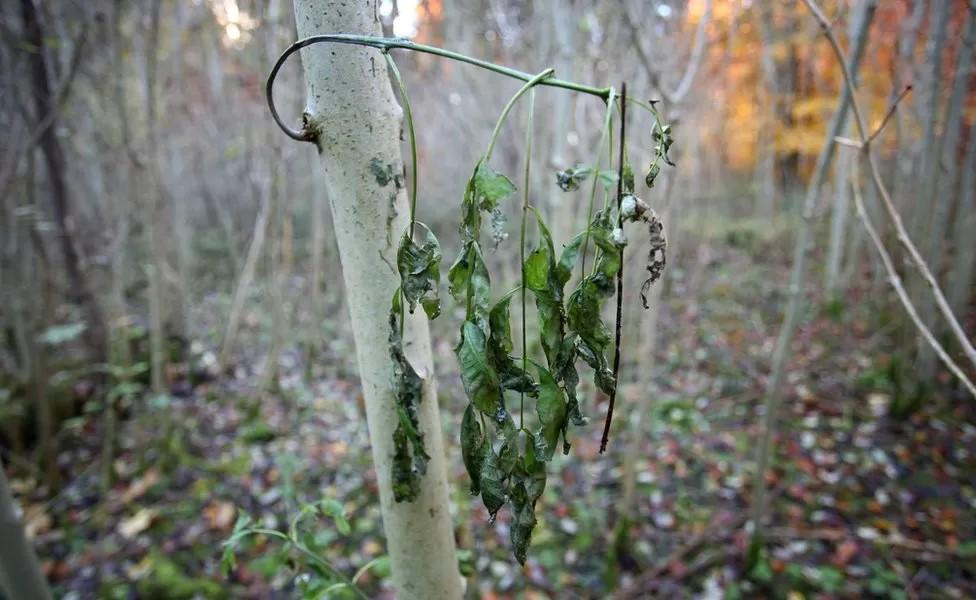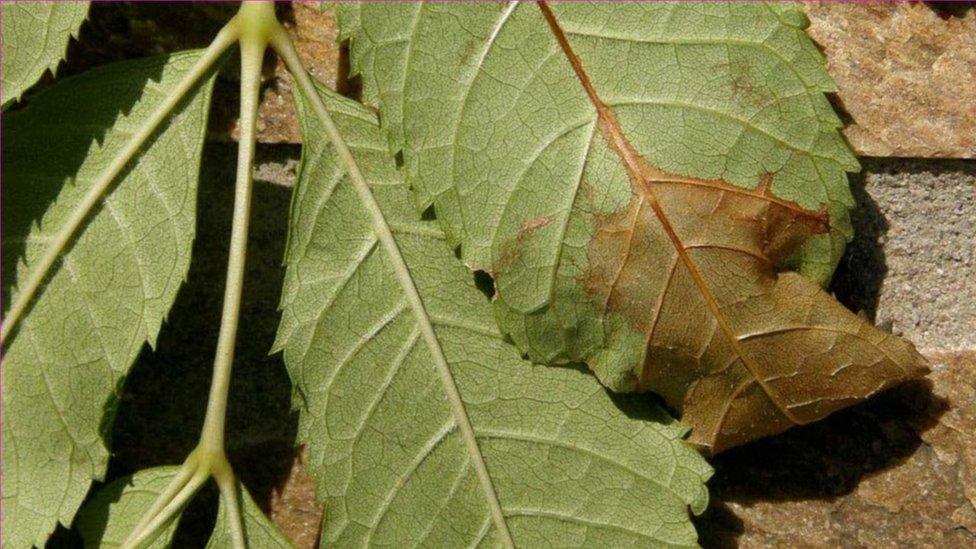Ash dieback-infected trees in Cumbria in danger of toppling over
- Published

European ash trees are being ravaged by the fungus Chalara Fraxinea Dieback
Some 1,000 ash dieback-ridden trees lining roadsides in Cumbria will need to be felled as they are in danger of falling on to people or property.
The trees were found to have been weakened by the fungal disease after a survey was carried out of about 5,000.
The infection originated in Asia but has devastated European ash populations since its introduction 30 years ago.
Cumbria County Council said new species would need to be planted which would change the landscape.
A survey of 5,326 ash trees, both on the highway and close by on private land, identified 1,102 as "severely diseased" and "require action" to protect the highways network.
The council said the disease, which has no known cure, had spread from the south of Cumbria to the north.
It called it the "worst tree disease" since the Dutch Elm outbreak in the late 1970s, which effectively wiped out mature elms from the British landscape.
"We need to take proactive measures to remove these trees before they potentially fall onto the highway," Rob Lewis, the council's highways asset manager, told BBC Radio Cumbria.
"When we plant new trees we will be looking potentially to replace ash tress with another species of trees - so the landscape will change in that respect, that there will be less ash trees in the future than there is at the moment."
Landowners who have an ash tree on their property or land that is infected and could be dangerous are being warned so they can take appropriate action, the council said.

Follow BBC North East & Cumbria on Twitter, external, Facebook, external and Instagram, external. Send your story ideas to northeastandcumbria@bbc.co.uk, external.
Related topics
- Published14 January 2023
